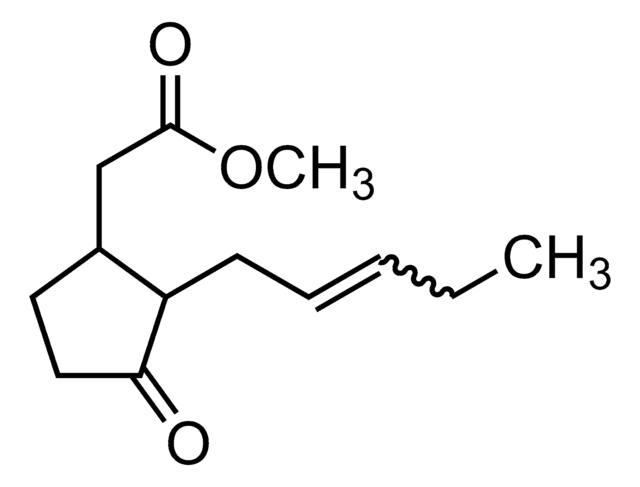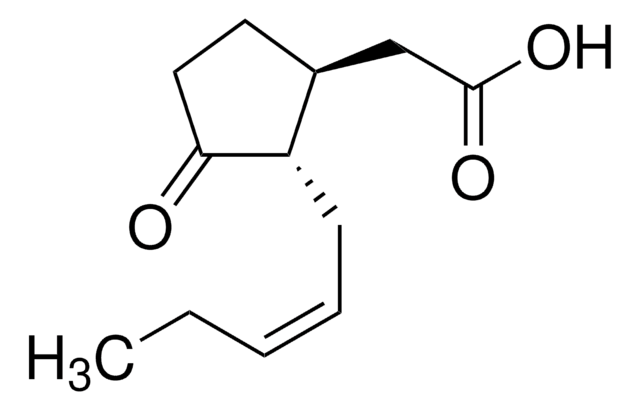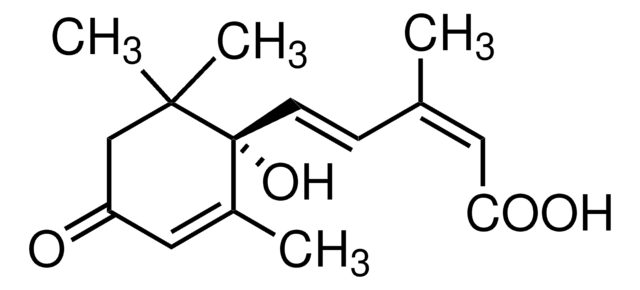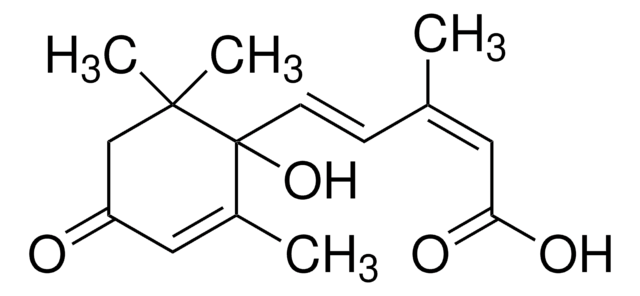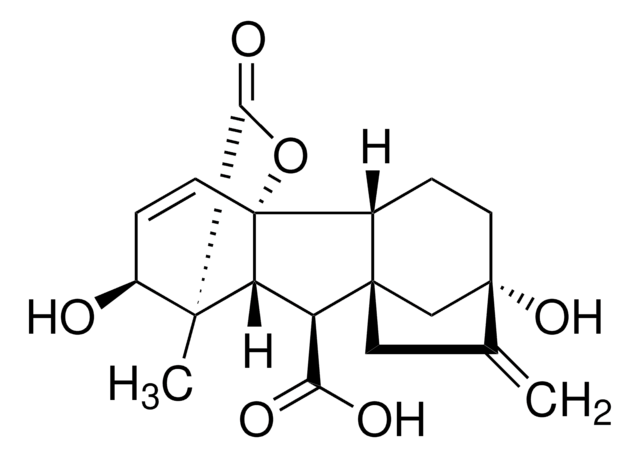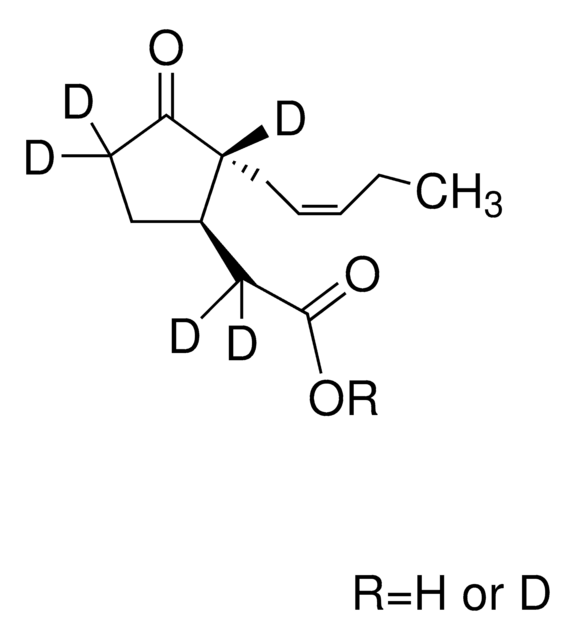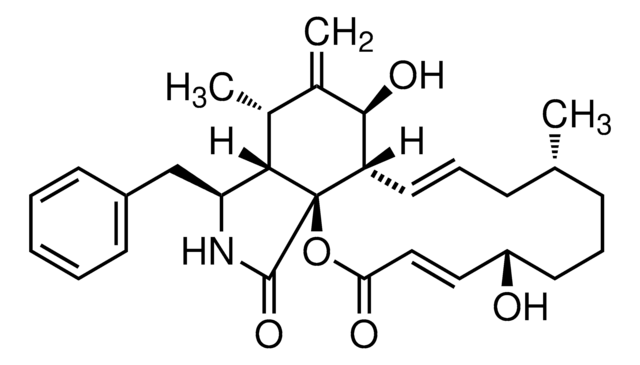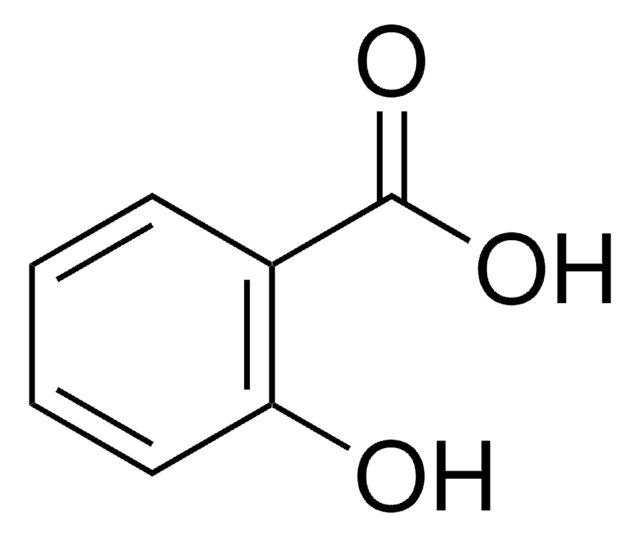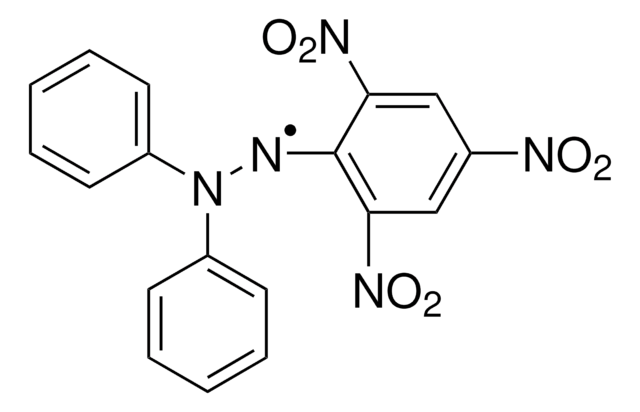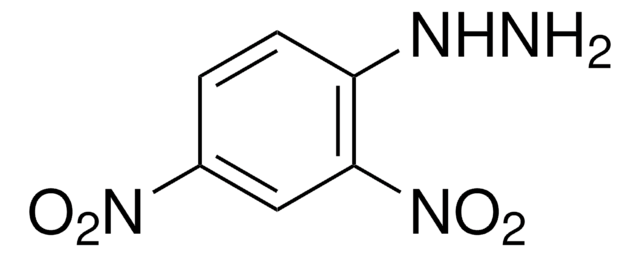J2500
(±)-Jasmonic acid
suitable for plant cell culture, BioReagent, liquid
Synonym(s):
(±)-1α,2β-3-Oxo-2-(cis-2-pentenyl)cyclopentaneacetic acid
Select a Size
CN¥3,801.15
List PriceCN¥5,430.22Save 30%Available to ship onApril 27, 2025Details
Select a Size
About This Item
CN¥3,801.15
List PriceCN¥5,430.22Save 30%Available to ship onApril 27, 2025Details
Recommended Products
product line
BioReagent
Quality Level
Assay
≥97% (TLC)
form
liquid
technique(s)
cell culture | plant: suitable
application(s)
agriculture
storage temp.
2-8°C
SMILES string
CC\C=C/C[C@H]1[C@@H](CCC1=O)CC(O)=O
InChI
1S/C12H18O3/c1-2-3-4-5-10-9(8-12(14)15)6-7-11(10)13/h3-4,9-10H,2,5-8H2,1H3,(H,14,15)/b4-3-/t9-,10-/m0/s1
InChI key
ZNJFBWYDHIGLCU-CMIOBCHKSA-N
Looking for similar products? Visit Product Comparison Guide
1 of 4
This Item | D199303 | P24101 | 67334 |
|---|---|---|---|
| Quality Level 100 | Quality Level 200 | Quality Level 200 | Quality Level 200 |
| mp ~135 °C (dec.) (lit.) | mp 197-200 °C (lit.) | mp 25-27 °C (lit.) | mp 25-27 °C (lit.), 27-29 °C |
| storage temp. 2-8°C | storage temp. - | storage temp. - | storage temp. - |
| form powder | form - | form crystals | form solid |
| color green | color - | color - | color - |
Application
Preparation Note
Other Notes
related product
Storage Class Code
11 - Combustible Solids
WGK
WGK 3
Flash Point(F)
Not applicable
Flash Point(C)
Not applicable
Personal Protective Equipment
Choose from one of the most recent versions:
Certificates of Analysis (COA)
Don't see the Right Version?
If you require a particular version, you can look up a specific certificate by the Lot or Batch number.
Already Own This Product?
Find documentation for the products that you have recently purchased in the Document Library.
Which document(s) contains shelf-life or expiration date information for a given product?
If available for a given product, the recommended re-test date or the expiration date can be found on the Certificate of Analysis.
How do I get lot-specific information or a Certificate of Analysis?
The lot specific COA document can be found by entering the lot number above under the "Documents" section.
What is the concentration of the liquid in the vial of Product J2500, (±)-Jasmonic acid?
This product is the neat liquid. It has not been diluted. The purity of the product is noted on the lot-specific Certificate of Analysis. The specifications for this product are available on our website.
How can I dilute Product J2500, (±)-Jasmonic acid?
Jasmonic acid is soluble in methanol (50 mg/ml) yielding a clear, colorless to faint yellow solution. Stock solutions of jasmonic acid can also be prepared in ethanol at 500 mM.
How can I store stock solutions of Product J2500, (±)-Jasmonic acid?
Stock solutions of 1000X in ethanol can be stored frozen for several months.
What concentration of Product J2500, (±)-Jasmonic acid, should I use for plant culture?
Jasmonic acid can be used at 0.01-100.0 mg/L in culture. It should be sterile filtered before use.
How do I find price and availability?
There are several ways to find pricing and availability for our products. Once you log onto our website, you will find the price and availability displayed on the product detail page. You can contact any of our Customer Sales and Service offices to receive a quote. USA customers: 1-800-325-3010 or view local office numbers.
What is the Department of Transportation shipping information for this product?
Transportation information can be found in Section 14 of the product's (M)SDS.To access the shipping information for this material, use the link on the product detail page for the product.
My question is not addressed here, how can I contact Technical Service for assistance?
Ask a Scientist here.
Protocols
Reference guide and preparation guide for antibiotic and antimycotic use in plant tissue culture.
Our team of scientists has experience in all areas of research including Life Science, Material Science, Chemical Synthesis, Chromatography, Analytical and many others.
Contact Technical Service